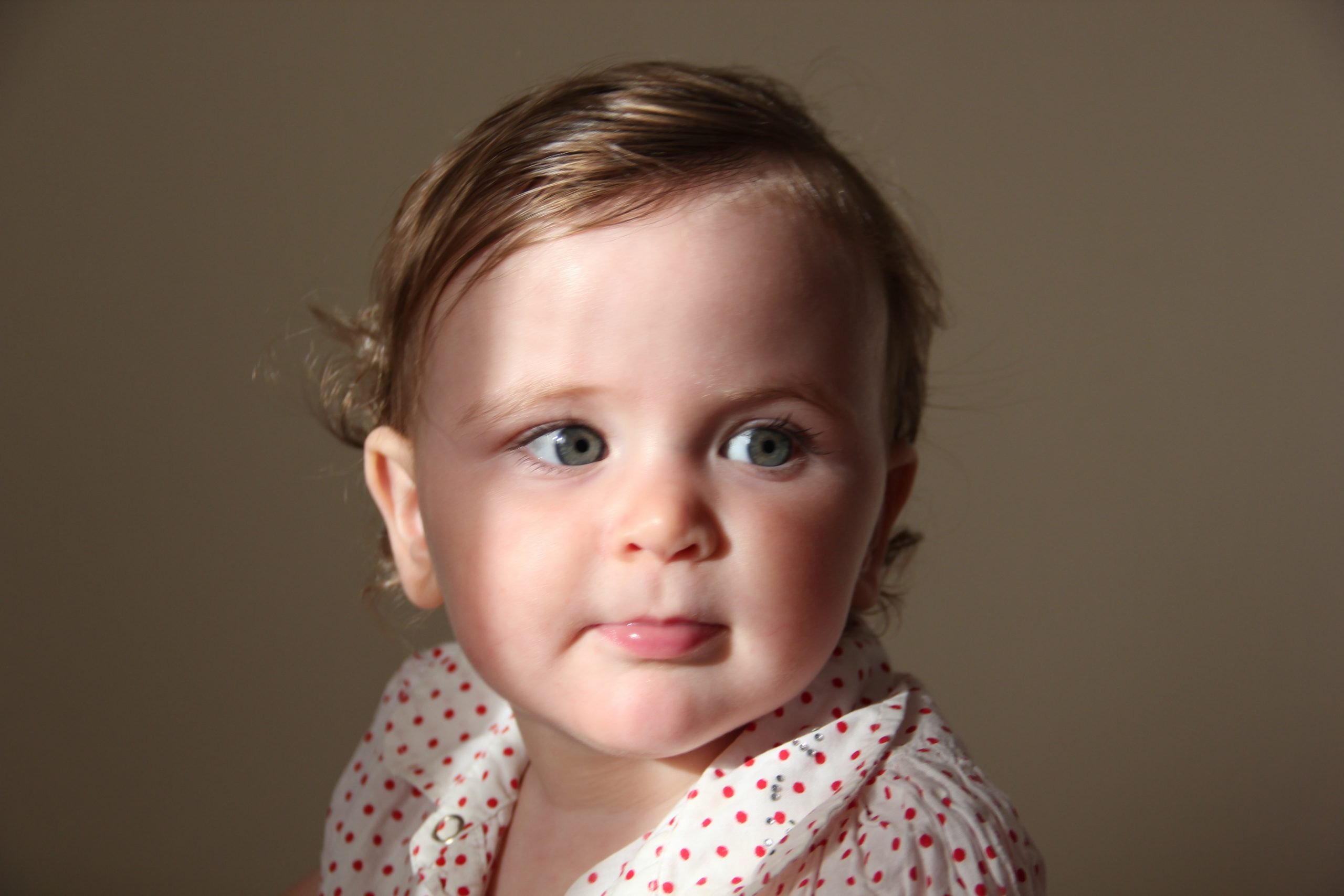The anticipation of a new arrival is a whirlwind of emotions – joy, excitement, and of course, the overwhelming curiosity of what this tiny human will be like. Among the countless questions whirring in a parent-to-be’s mind, one often surfaces prominently: “What hair color will my baby have?”

Image: www.infantempire.com
The color of your baby’s hair is like a tiny mystery waiting to be revealed. It’s a captivating question that touches on genetics, inheritance, and the little bit of magic that makes each child unique. While we can’t predict the precise shade with absolute certainty, understanding the factors involved can shed light on the possibilities and make the anticipation even more thrilling.
A Journey Through Heredity: Deciphering the Genetics of Hair Color
The hair color of your baby is determined by a complex interplay of genes inherited from you and your partner. Think of it as a genetic recipe passed down through generations, where each parent contributes a set of instructions for pigment production. These instructions, in the form of genes, control the production of melanin, the pigment that gives hair its color.
The key players in this genetic dance are two main types of melanin: eumelanin and pheomelanin. Eumelanin, responsible for brown and black hair, is like the dark chocolate in your genetic recipe. Pheomelanin, on the other hand, provides the lighter notes – blond and red hair. The balance of these two pigments determines the final hair color.
The Dominant and Recessive Dance: Understanding Gene Interactions
While genetics provides the blueprint, the actual hair color your baby inherits is a result of how those genes interact. Some genes are dominant, meaning they will always express their trait, while others are recessive, needing two copies of the gene to be visible.
For example, if one parent has brown hair, the dominant gene, and the other has blonde hair, the recessive gene, their child has a higher chance of inheriting brown hair. However, the child may also inherit a recessive gene for blonde hair from both parents, resulting in a blonde-haired baby.
Beyond the Basics: The Influence of Other Factors
While genes are the primary architects of hair color, several other factors can influence the final shade:
- Environmental Factors: Exposure to sunlight can lighten hair, while environmental toxins like smoke can darken it.
- Hormonal Fluctuations: Pregnant women often experience changes in hair color due to hormonal shifts.
- Age: Hair color can change with age due to a gradual decline in melanin production.

Image: www.romper.com
Predicting the Possibilities: A Guide to Hair Color Combinations
Here’s a breakdown of how different hair color combinations in parents might influence the hair color of their offspring:
- Two Dark-haired Parents: The child is likely to have dark hair, ranging from brown to black, but there’s a chance of lighter shades if recessive genes for lighter hair colors are present.
- One Dark-haired Parent, One Light-haired Parent: The child has a higher probability of inheriting the dominant dark hair color but could also inherit lighter shades, depending on the specific genes involved.
- Two Light-haired Parents: The child is more likely to have light hair, but again, recessive genes from other ancestors could surprise with a darker shade.
The Mystery Unfolds: What To Expect in the First Months
It’s important to note that baby hair, known as lanugo, is often very fine and light, regardless of the child’s eventual hair color. This is because the melanin production in newborns is not yet fully developed. As the baby grows, their hair will likely change color and become more prominent, revealing the permanent shade.
Keep in mind that the hair color of a newborn can continue to evolve through their first few years. While it’s fun to guess and speculate, the true reveal is something that unfolds naturally with time.
Embracing the Unpredictable: Beauty in Every Shade
The beauty of parenthood lies in the constant stream of surprises – and that includes the hair color of your child. Instead of focusing on the specific shade, embrace the anticipation and the gift of individuality. Whether your baby has dark, light, or a unique blend of colors, it’s a part of what makes them uniquely yours.
What Hair Color Will My Baby Have
The Emotional Tapestry: Connecting With Your Baby Through Hair Color
Your baby’s hair color is more than just a physical attribute; it’s a symbol of connection and inheritance. It’s a reminder of the unique tapestry of genes that make your child special. As your baby grows, their hair color may become a source of shared moments: choosing hair accessories, playfully braiding strands, or simply admiring the softness of their locks.
Ultimately, the color of your baby’s hair is a part of their individual story, a story that unfolds with each passing moment. Embrace the mystery, the anticipation, and the joy of witnessing this beautiful evolution. The most important thing is to love your child just as they are, in all their stunning uniqueness.





